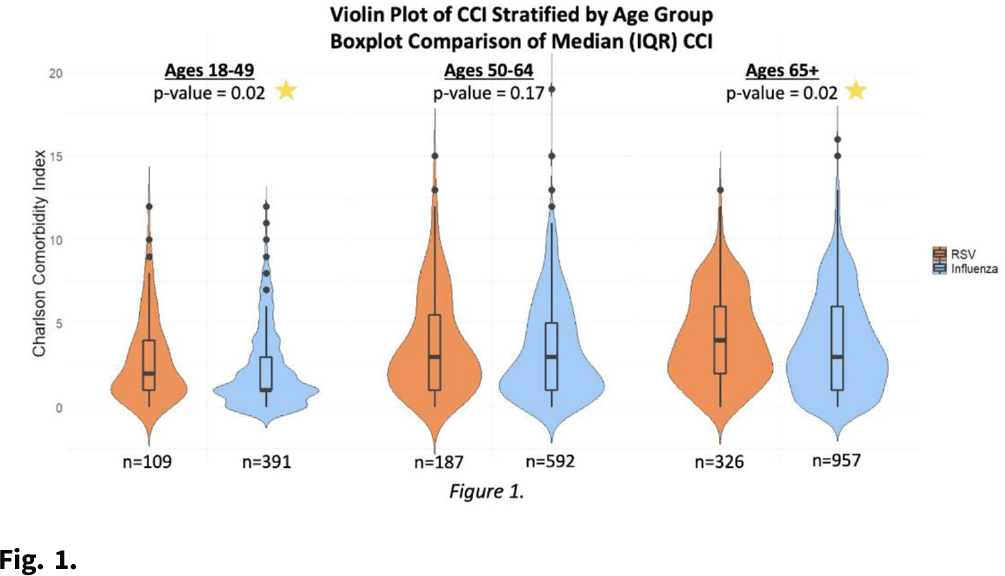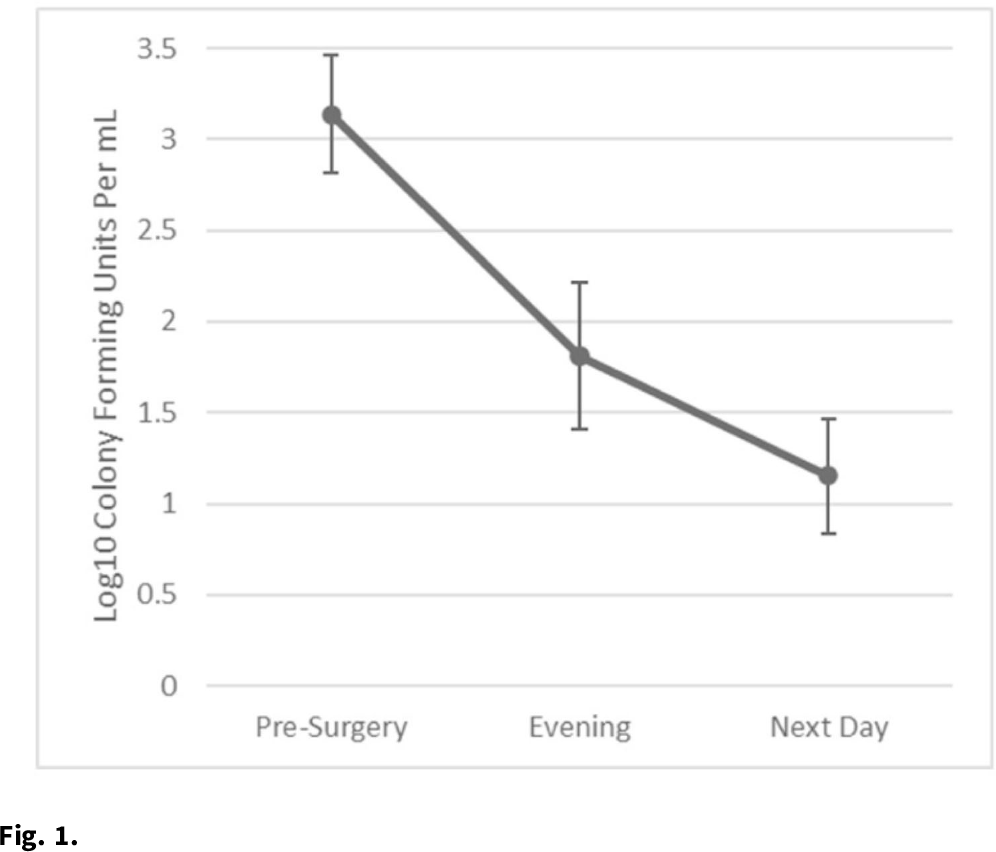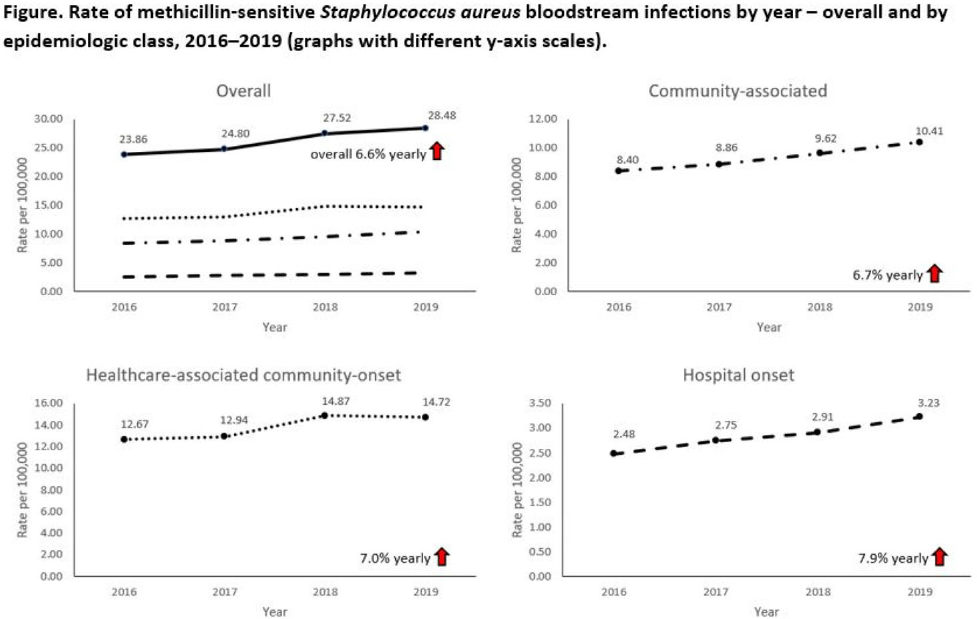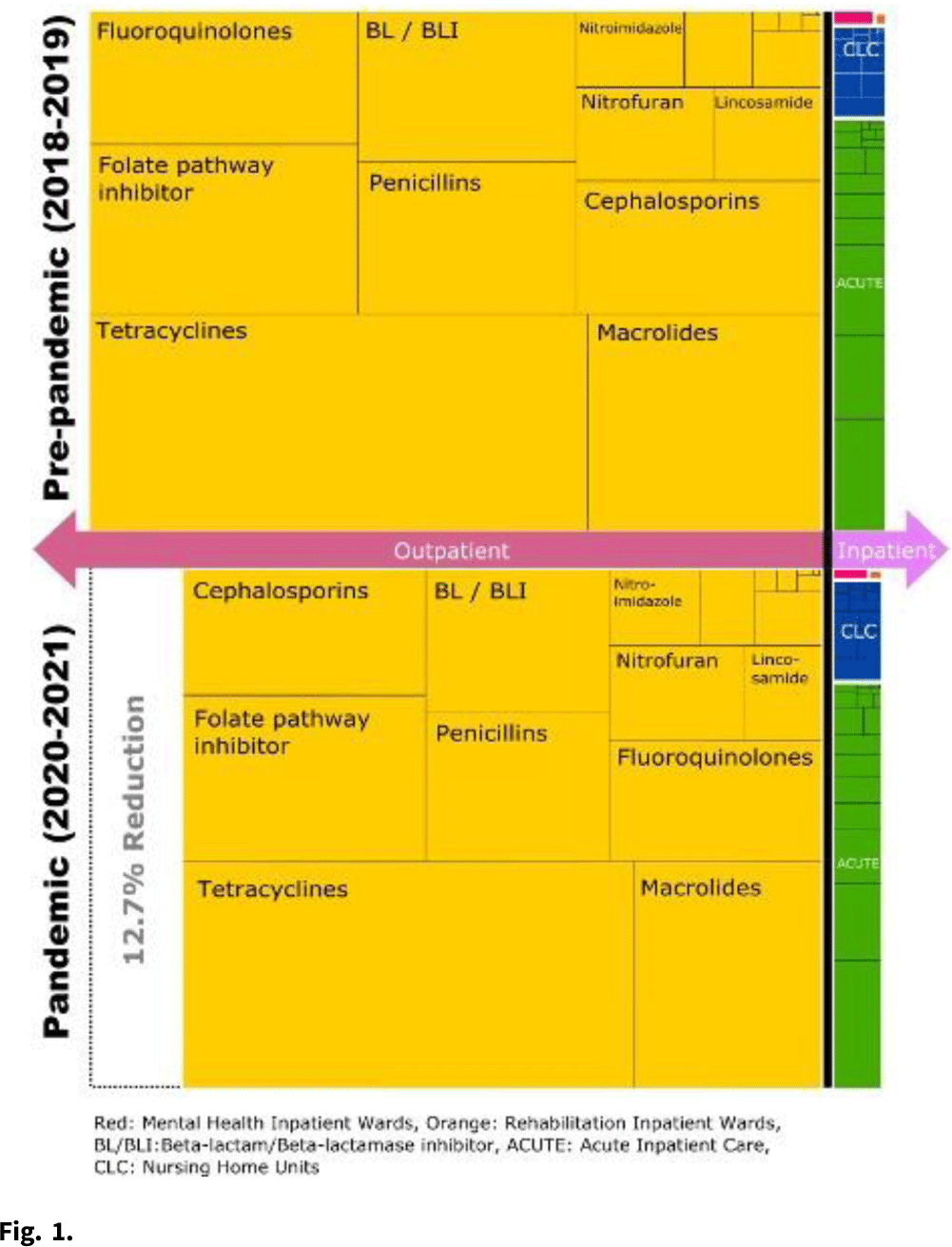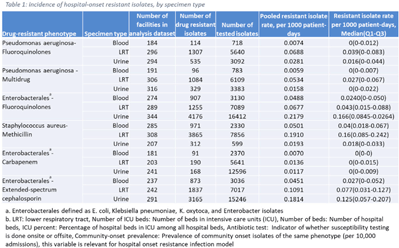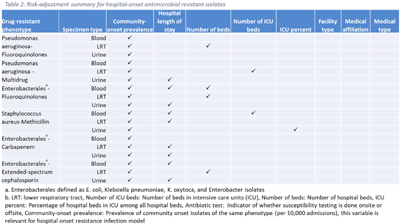Poster Presentation - Poster Presentation
Respiratory Viruses Other than SARS-CoV-2
Relevance of RSV in hospitalized adults and the need for continued testing
-
- Published online by Cambridge University Press:
- 16 May 2022, p. s62
-
- Article
-
- You have access
- Open access
- Export citation
Original Article
Evaluating the impact of mandatory indications on antibiotic utilization in a community hospital
-
- Published online by Cambridge University Press:
- 15 July 2022, e121
-
- Article
-
- You have access
- Open access
- HTML
- Export citation
Poster Presentation - Poster Presentation
SSI
Feasibility and acceptability of intranasal povidone iodine decolonization among orthopedic trauma surgery patients
-
- Published online by Cambridge University Press:
- 16 May 2022, pp. s62-s63
-
- Article
-
- You have access
- Open access
- Export citation
Corrigendum
Is your ice machine really clean? Uncovering the presence of opportunistic pathogens in hospital ice machines – CORRIGENDUM
-
- Published online by Cambridge University Press:
- 15 July 2022, e122
-
- Article
-
- You have access
- Open access
- HTML
- Export citation
Poster Presentation - Poster Presentation
SSI
Implementation of surgical site infection surveillance in 16 health facilities in Sierra Leone
-
- Published online by Cambridge University Press:
- 16 May 2022, p. s63
-
- Article
-
- You have access
- Open access
- Export citation
Original Article
Clinical and occupational risk factors for coronavirus disease 2019 (COVID-19) in healthcare personnel
-
- Published online by Cambridge University Press:
- 18 July 2022, e123
-
- Article
-
- You have access
- Open access
- HTML
- Export citation
Poster Presentation - Poster Presentation
Surveillance/Public Health
Increases in methicillin-sensitive Staphylococcus aureus bloodstream infection incidence, 2016–2019
-
- Published online by Cambridge University Press:
- 16 May 2022, pp. s63-s64
-
- Article
-
- You have access
- Open access
- Export citation
Concise Communication
Effect of discontinuing ongoing education and postprescription feedback on antimicrobial prescriptions at discharge from the emergency department
-
- Published online by Cambridge University Press:
- 18 July 2022, e124
-
- Article
-
- You have access
- Open access
- HTML
- Export citation
Poster Presentation - Poster Presentation
Surveillance/Public Health
Reduction in outpatient antibiotic utilization: An unintended benefit of the COVID-19 pandemic?
-
- Published online by Cambridge University Press:
- 16 May 2022, p. s64
-
- Article
-
- You have access
- Open access
- Export citation
Concise Communication
Longitudinal analysis of risk factors associated with severe acute respiratory coronavirus virus 2 (SARS-CoV-2) infection among hemodialysis patients and healthcare personnel in outpatient hemodialysis centers
-
- Published online by Cambridge University Press:
- 21 July 2022, e125
-
- Article
-
- You have access
- Open access
- HTML
- Export citation
Commentary
Electronic hand hygiene monitoring systems: Not worth the costs
-
- Published online by Cambridge University Press:
- 25 July 2022, e126
-
- Article
-
- You have access
- Open access
- HTML
- Export citation
Poster Presentation - Poster Presentation
Surveillance/Public Health
Mortality rates among non-Hispanic Black and White persons in carbapenemase-producing Enterobacterales, Tennessee, 2015–2019
-
- Published online by Cambridge University Press:
- 16 May 2022, pp. s64-s65
-
- Article
-
- You have access
- Open access
- Export citation
Original Article
Comparison of two electronic hand hygiene systems using real-time feedback via wireless technology to improve hand hygiene compliance in an intensive care unit
-
- Published online by Cambridge University Press:
- 25 July 2022, e127
-
- Article
-
- You have access
- Open access
- HTML
- Export citation
Poster Presentation - Poster Presentation
Surveillance/Public Health
Developing national benchmarks for antimicrobial resistance–NHSN, 2019
-
- Published online by Cambridge University Press:
- 16 May 2022, p. s65
-
- Article
-
- You have access
- Open access
- Export citation
Findings from healthcare-associated infections data validation attestation in California general acute-care hospitals
-
- Published online by Cambridge University Press:
- 16 May 2022, pp. s65-s66
-
- Article
-
- You have access
- Open access
- Export citation
Original Article
Trends in hospital antibiotic utilization during the coronavirus disease 2019 (COVID-19) pandemic: A multicenter interrupted time-series analysis
-
- Published online by Cambridge University Press:
- 28 July 2022, e128
-
- Article
-
- You have access
- Open access
- HTML
- Export citation
Poster Presentation - Poster Presentation
Surveillance/Public Health
Lessons learned: Characteristics of first-year COVID-19 hospital outbreaks
-
- Published online by Cambridge University Press:
- 16 May 2022, p. s66
-
- Article
-
- You have access
- Open access
- Export citation
Original Article
“Our job is to break that chain of infection”: Challenges environmental management services (EMS) staff face in accomplishing their critical role in infection prevention
-
- Published online by Cambridge University Press:
- 29 July 2022, e129
-
- Article
-
- You have access
- Open access
- HTML
- Export citation
Poster Presentation - Oral Presentation
Antibiotic Stewardship
Susceptibility results discrepancy analysis between NHSN Antibiotic Resistance (AR) Option and laboratory instrument data
-
- Published online by Cambridge University Press:
- 16 May 2022, p. s66
-
- Article
-
- You have access
- Open access
- Export citation
Commentary
SHEA 2022 Spring Proceedings without borders
-
- Published online by Cambridge University Press:
- 01 August 2022, e130
-
- Article
-
- You have access
- Open access
- HTML
- Export citation

